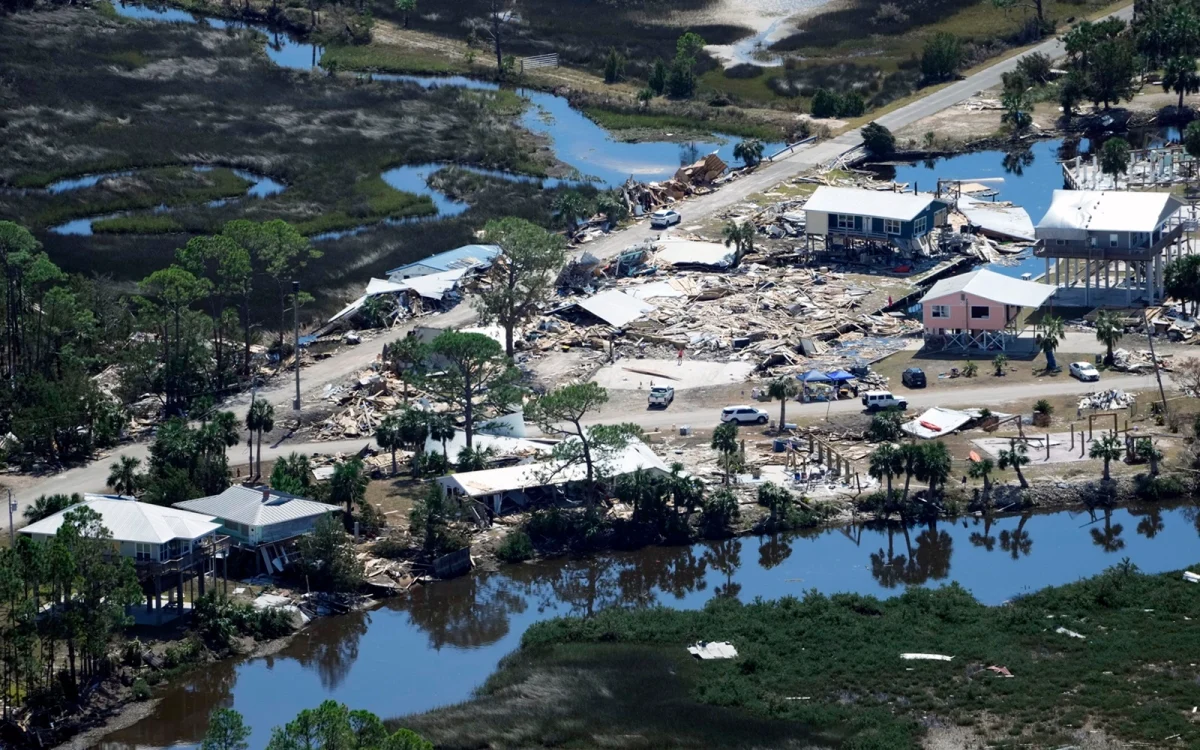In the previous weeks, many storms have been raging in parts of the southern United States, from Florida to North Carolina. On September 23rd, the National Hurricane Center in Miami sent out a warning that a potential storm was starting to form in Mexico’s Yucatán Peninsula, though the movement of the storm remained uncertain. On the 24th, hurricane Helene was officially labeled as a tropical storm as it rampaged through parts of Cuba. Warnings were issued in Florida as Helene was estimated to arrive and strike northern parts of the state with unsurvivable conditions.

On the 25th of September, Helene took the title of a category one hurricane as it made its way through parts of Mexico, destroying popular tourist destinations and washing up beaches. The warnings sent to parts of Florida spread farther up the coast, sending flash and urban flood warnings as far as regions like the Tennessee Valley. In just a day, Helene jumped from a category one hurricane to a category four. As it neared the Gulf Coast of Florida, Helene reached wind speeds upwards of 130mph.
Hurricane Helene finally hit the land of Keaton Beach in Florida at 11:10 P.M on September 26th, 2024. As Helene moved through Florida, its high wind speeds and heavy rainfall swept away towns, cutting off people’s access to necessities and to each other. People were struggling to reach their loved ones due to the torn-up roads and rushing water, and to date, hundreds of people are still missing.
As Hurricane Helene ripped through the South Coast, the debris left behind from the hurricane will more than likely take years to repair, especially in parts of Florida, Georgia, and South Carolina. Hurricane Helene is now known as a deadly disaster as the total death toll for this storm keeps increasing as the days pass, currently standing at 224. Recovery efforts are being made by the people who live in each state helping one another.
President Biden has approved declarations for the affected states and has hired more than 4,500 people from the federal workforce to go to each state and supply food, water, toiletries, and generators for those who lost power. While these supplies are only basic needs, they’re helping those who lost homes and give businesses the chance to restore stock. Since this hurricane destroyed the Southern states, the clean-up will not be easy. As the people are faced with these tragedies, the only thing left for them to do is come together and help one another, attempting to return to their normal lives.
Even though Florida was devastated by Hurricane Helene, mother nature didn’t wait for the people to rebuild. Another hurricane, Milton, headed straight for the Sunshine State. Hurricane Milton was recorded to have groundbreaking wind speeds, reaching a category 5 as it made its way over the Gulf of Mexico, barreling toward the West Coast of Florida. As it reached Florida as a category 3 storm, Hurricane Milton brought multiple tornadoes with it. At least 116 tornado warnings were issued.

Hurricane Milton is now labeled as the most costliest storm on record! Just like Hurricane Helene, the aftermath of the storm has led to more than 1 billion dollars in damage, and now Florida is struggling to pocket the money for both disasters. While people were evacuating because of hurricane Helene, hurricane Milton hit and caused cars to get stuck on highways, preventing some people from getting out in time. Currently, there have been 24 confirmed deaths, with more than 300 in total from this hurricane season.
Governor Ron DeSantis announced that while Florida is under a state of emergency, they will supply at least $5,000 to those who were most impacted by the hurricane. President Biden stated, “FEMA has delivered 1.2 million meals, over 300,000 liters of water, 2 million gallons of fuel. And so far, we’ve installed 100 satellite terminals to restore communications in impacted areas so families can contact their loved ones to be sure everything is okay and be able to reach out for help as well.” Additionally, President Biden has issued more than $1.8 billion for hurricane relief efforts, and now Floridians are able to sustain themselves until they are able to fully recover from the storms.
Additional Sources Used:
How Hurricane Helene became a deadly disaster across 6 states – USC News & Events
Helene-ravaged areas will feel health effects for years: ‘It’s unprecedented’
What Role Do Governments Play After a Disaster? Will Hurricane Helene Change Anything?
How Helene devastated western North Carolina and left communities in ruins | CNN
Hurricane Helene: a visual timeline of storm’s devastation
Hurricane Milton Makes Landfall on Florida’s Siesta Key: Live Updates – The New York Times
https://www.afar.com/magazine/should-you-travel-to-florida-in-hurricane-milton-aftermath

